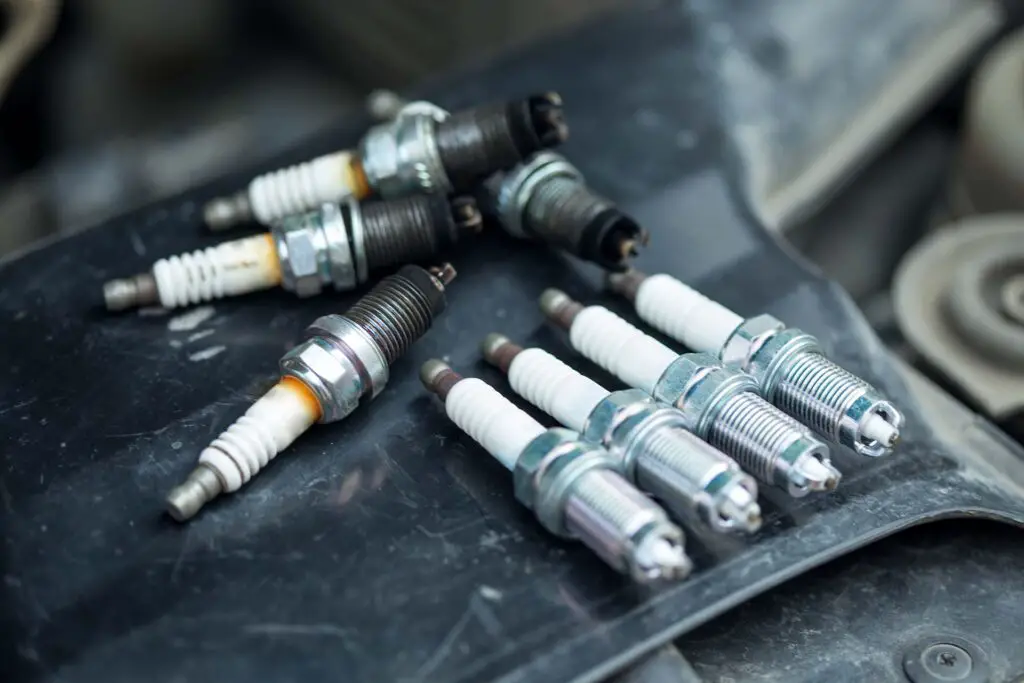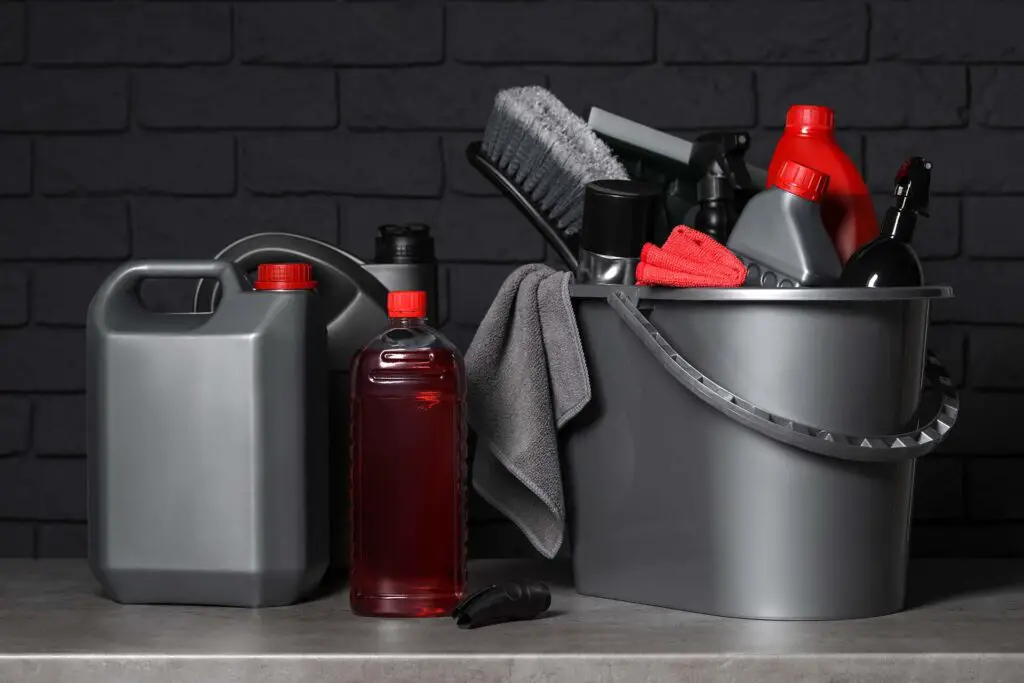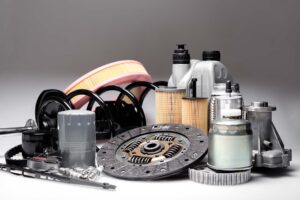If you’re an avid car lover, you know that taking care of your engine is essential to get the best performance out of it. Particular attention must be paid to learning how to clean carbon off pistons, as a thorough and regular clean keeps the system running smoothly and more efficiently. Let’s explore together how to do it and check some top tips on how to ensure optimal performance in the long run.
To clean carbon buildup off pistons, you can use a specialized cleaner, such as STA-BIL Fast Fix or brake cleaner, along with a wire brush or abrasive pad. Apply the cleaner to the pistons, let it sit for a few minutes, and then scrub off the carbon with the brush or pad. Repeat the process until the parts are clean.
What Are Car Pistons?
Pistons are essential components of an engine that help to convert fuel into energy to power your car. They move up and down in the engine’s cylinders, compressing the air and fuel mixture and igniting it to produce power. Pistons come in different shapes and sizes, depending on the engine’s design and specifications. Without them, your car would be pretty much useless!
Taking proper care of your four-wheeler surely will keep it in the best possible condition. This means you should have all the components clean and well-functioning. From cleaning the steering wheel and the seat belts to keeping the windshield wipers impeccable, too. But when it comes to cleaning internal components, you’ll need just a bit more time to prepare yourself for the job, especially when it comes to the engine.
Why Is It Important to Know How to Clean Carbon Deposits off Piston?
It’s important to know how to clean carbon deposits because these deposits can negatively affect your engine’s performance and lifespan. Carbon buildup can cause reduced power, decreased fuel efficiency, and increased emissions.
Over time, this can lead to more severe engine problems and costly repairs. By removing carbon deposits from your pistons, you can restore your engine’s performance and prevent further damage. Additionally, regular cleaning of carbon deposits can help prolong the life of your engine and improve its overall efficiency.

Step-by-Step Guide on How to Clean Carbon off Pistons
Carbon buildup on engine pistons can be a common problem that can negatively impact your car’s performance and fuel efficiency. If left unattended, carbon deposits can cause significant engine damage and even lead to costly repairs.
The good news is that cleaning the carbon is a straightforward process that you can do yourself with some basic tools and the right approach. So, here’s a step-by-step guide to do this job effortlessly and help you restore your car’s performance and keep your engine running smoothly
Gather the Necessary Tools and Materials
Before starting the process of cleaning, you will need to gather the necessary tools and materials. Here’s what you’ll need:
- A specialized cleaner,
- A wire brush or abrasive pad,
- Protective gloves and eyewear,
- Rags or paper towels,
- A socket wrench set (if removing the spark plugs),
- A vacuum cleaner (optional).
Remove the Spark Plugs and Inspect Them
The first step is to remove the spark plugs and inspect them. Start by allowing the engine to cool down completely before starting work. It will enable you to locate the spark plugs safely. But notice it will depend on your car’s make and model. They may be easily accessible or located under engine covers or other components.
Use a socket wrench to remove the spark plugs from the engine. Then, proceed with inspecting the spark plugs for signs of wear, damage, or excessive carbon buildup. If any spark plugs are damaged or heavily coated in carbon, they should be replaced. Finish this step by setting the spark plugs aside in a safe place while you clean the pistons.
Removing the spark plugs will make it easier to access the pistons and ensure that no debris falls into the cylinders while cleaning. Inspecting the spark plugs will also give you an idea of the engine’s overall condition and identify any potential problems that need to be addressed.

Use a Piston Cleaning Solution to Dissolve Carbon Buildup
Once you’ve removed the spark plugs, you can begin the process of cleaning the carbon buildup off the pistons. One effective method is to use a specialized piston cleaning solution. These cleaners are designed to dissolve and loosen carbon buildup, making it easier to remove that pesky buildup. Here are some of the most effective cleaning solutions.
| Cleaning Solution | Price |
| Gumout 510013 | $16.99 |
| STA-BIL Fast Fix | $8.99 |
| A+MAX Cleaner | $69.95 |
Before applying the solution, protect your hands and eyes with gloves and eyewear. Spray the cleaner onto the piston, covering the entire surface. Let the solution sit for a few minutes to allow it to work its magic. The solution will break down the carbon buildup, making it easier to remove when you scrub it off.
Soak the Pistons in the Cleaning Solution for a Specific Period
After applying the cleaning solution, you’ll need to soak them for a specific period to allow the solution to dissolve and loosen the carbon buildup effectively. The soaking time can vary depending on the cleaning solution you’re using, so be sure to follow the manufacturer’s instructions carefully.
Generally, most cleaning solutions require a soaking time of around 15 to 30 minutes. During this time, the solution will penetrate the carbon buildup, breaking it down and making it easier to remove. While the pistons are soaking, you can prepare your wire brush or abrasive pad and get ready to scrub the carbon buildup off.
It’s important to note that you should not allow the cleaning solution to dry on the pistons. If the solution dries, it can form a hard, sticky residue that can be difficult to remove. Therefore, be sure to follow the recommended soaking time and avoid leaving the solution for too long.
Use a Soft Brush or Cloth to Remove the Remaining Carbon
It’s important to use a soft-bristled brush or abrasive pad to avoid damaging the piston surface. You can also use a microfiber cloth to wipe away the carbon buildup. Start by gently scrubbing the carbon deposits in a circular motion, being careful not to apply too much pressure.
As you scrub, you’ll notice that the carbon buildup will start to come off, revealing a cleaner surface. Continue scrubbing until all the carbon buildup has been removed. You may need to repeat the process a few times to remove all the carbon, especially if it’s heavily deposited on the piston surface.

Rinse the Pistons With Water and Dry Them Thoroughly
Rinsing the pistons with water and drying them thoroughly will help to remove any remaining cleaning solution and carbon particles, preventing them from causing any damage to the engine. It’s important to dry the pistons thoroughly to avoid any water droplets from causing corrosion or rust on the metal surface.
Reinstall the Spark Plugs and Start the Engine to Check the Performance Improvement
Carefully reinsert the spark plugs into the engine and tighten them with a socket wrench. Make sure the plugs are correctly seated and torqued to the manufacturer’s recommended specification. Once you’ve reinstalled the spark plugs, start the engine and let it run for a few minutes.
During this time, pay close attention to any changes in the engine’s sound, power, and acceleration. You may notice a significant improvement in performance, such as smoother acceleration, increased power, and better fuel efficiency.
If you don’t notice any improvement or if the engine is still running rough, there may be other underlying issues that require further attention. In such cases, it’s recommended to consult with a professional mechanic or technician to diagnose and address the problem.

Tips for Preventing Carbon Buildup on Pistons
Preventing carbon buildup is essential for maintaining the performance and lifespan of your car’s engine. While cleaning the carbon off the pistons is an effective way to restore engine performance, it’s always better to prevent carbon buildup in the first place. Here are some tips on how to do it.
Use High-Quality Fuel and Oil
The quality of fuel and oil you use can have a significant impact on carbon buildup on your engine’s pistons. Using high-quality fuel and oil can help prevent carbon deposits from forming in the first place. Choose a high-quality fuel that has a lower sulfur content and is free of impurities. Opt for synthetic oil, which is less likely to leave carbon deposits on the pistons.
Change the Oil and Oil Filter Regularly
Regular oil changes are essential for maintaining the health of your engine and preventing carbon buildup. Change your oil and oil filter according to the manufacturer’s recommended schedule.
Drive the Car at High Speeds Occasionally
Driving your car at high speeds occasionally can help prevent carbon buildup. High-speed driving can help burn off any excess carbon deposits that may have formed on the pistons, helping to keep them clean and functioning efficiently. However, be sure to do this safely and within the legal limits of your area.
Avoid Idling the Engine for Extended Periods
When the engine is idling, the temperature is low, and there is no air moving through the engine. This can cause incomplete combustion of fuel, leading to carbon deposits on the pistons. Avoid idling your engine for extended periods, especially in cold weather.
Use an Engine Cleaner Additive in the Fuel Tank Periodically
Using an engine cleaner additive in the fuel tank periodically can help prevent carbon buildup on the pistons. These additives are designed to break down and dissolve carbon deposits, keeping the engine clean and functioning efficiently. Be sure to use a high-quality additive and follow the manufacturer’s instructions carefully. I personally use Triax Max Oil Booster S7.
When You Learn How to Clean Carbon off Pistons and Valves, Your Car Will Run Smoothly
Whether you have a great deal of knowledge about cars or not, understanding the impact carbon buildup can have on your car’s performance is important. Cleaning the carbon off pistons and valves helps maximize engine power, fuel economy, and capacity. Doing this regularly ensures that your vehicle runs smoothly with minimal wear and tear over the years. Keeping up with this type of maintenance might not sound like much fun, but it’s ultimately what keeps your car running optimally longer and can make sure your vehicle is running at its best.








